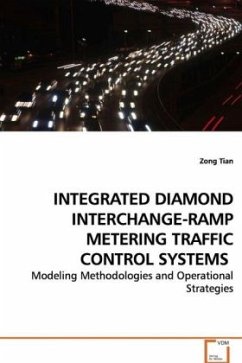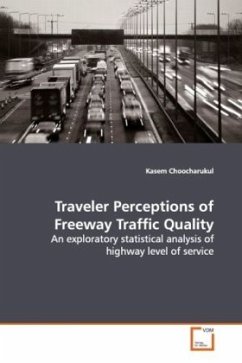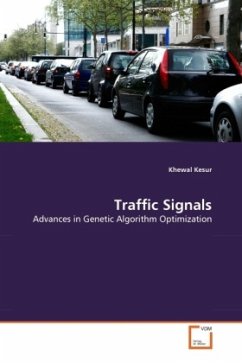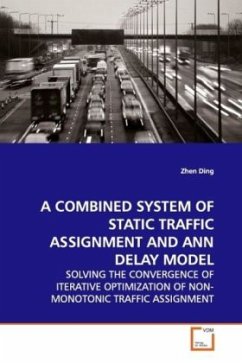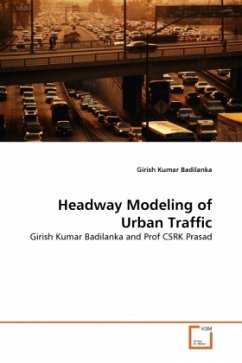
Impacts of Traffic Signal Control Strategies
Evaluation and Developement of Traffic Signal Control Strategies Using Stockholm as a Case Study
Versandkostenfrei!
Versandfertig in 6-10 Tagen
52,99 €
inkl. MwSt.

PAYBACK Punkte
26 °P sammeln!
The LHOVRA is the predominant isolated signal control strategy in Sweden. Past-end green was originally incorporated as part of LHOVRA (the O function) and was intended to reduce the number of vehicles in the dilemma zone. Coordinated signal control in Sweden is often fixed-time with local vehicle actuated signal timing adjustments and bus priority.The aim was to evaluate the following strategies using Stockholm as a case study: 1. The LHOVRA technique with a focus on the O function;2. Fixed time coordination (FTC); 3. Fixed time coordination with local signal timing adjustment (FTC-LTA); 4. F...
The LHOVRA is the predominant isolated
signal control strategy in Sweden. Past-end green
was originally incorporated as part of LHOVRA
(the O function) and was intended to reduce the
number of vehicles in the dilemma zone. Coordinated
signal control in Sweden is often fixed-time with
local vehicle actuated signal timing adjustments and
bus priority.
The aim was to evaluate the following
strategies using Stockholm as a case study:
1. The LHOVRA technique with a focus on the O
function;
2. Fixed time coordination (FTC);
3. Fixed time coordination with local signal
timing adjustment (FTC-LTA);
4. FTC-LTA as above + active bus priority
(PRIBUSS);
5. Self-optimizing control (SPOT).
Field measurements were used for study of driver
behavior and traffic impacts. VISSIM & HUTSIM
simulation models calibrated and validated with
empirical data were used to study traffic
performance and safety impacts of the suggested
improvements. TRANSYT was used to produce optimized
signal timings.
A method to calculate the approach delay was
developed based on the observed number of queuing
vehicles at the start and end of green.
signal control strategy in Sweden. Past-end green
was originally incorporated as part of LHOVRA
(the O function) and was intended to reduce the
number of vehicles in the dilemma zone. Coordinated
signal control in Sweden is often fixed-time with
local vehicle actuated signal timing adjustments and
bus priority.
The aim was to evaluate the following
strategies using Stockholm as a case study:
1. The LHOVRA technique with a focus on the O
function;
2. Fixed time coordination (FTC);
3. Fixed time coordination with local signal
timing adjustment (FTC-LTA);
4. FTC-LTA as above + active bus priority
(PRIBUSS);
5. Self-optimizing control (SPOT).
Field measurements were used for study of driver
behavior and traffic impacts. VISSIM & HUTSIM
simulation models calibrated and validated with
empirical data were used to study traffic
performance and safety impacts of the suggested
improvements. TRANSYT was used to produce optimized
signal timings.
A method to calculate the approach delay was
developed based on the observed number of queuing
vehicles at the start and end of green.




